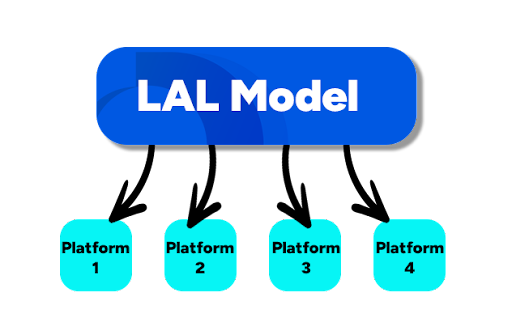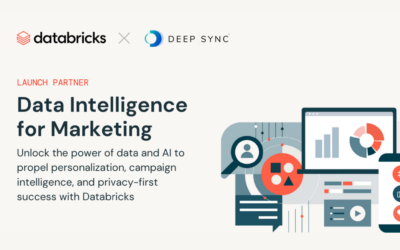Platform-specific lookalike audiences just don’t cut it. Here’s what to do instead.
As we enter a new era of AI, it’s exciting to see the developments in marketing and data analytics. Undoubtedly these will have profound effects on marketing—particularly on predictive modeling.
Marketers have been fortunate to have had access to incredibly powerful modeling automation through advertising tools on platforms such as Meta and Google. The targeting functionality on these platforms is built on a rich, detailed understanding of consumers and their behavior (as it relates to their use on each platform). As such, these platforms have generated enormous growth.
Modeling “easy buttons” were designed to take the complex decision-making away from the marketer. While convenient, this has led to significant limitations in audience targeting capabilities. Omnichannel marketers are especially concerned with navigating the industry’s walled gardens and the potential impact of limiting their learnings to a singular platform.
One area of concern harks back to the performance impacts felt by marketers as a result of iOS14.5: Once Apple users were granted the power to decide what data they wanted to share with the apps on their devices, Facebook’s targeting capabilities became more limited.
Those building entire acquisition strategies in a single channel were all of a sudden faced with a choice: reduce spend because ads were less effective (thereby reducing the flow of leads) or accept much higher customer acquisition costs.
The second area of concern is related to knowledge. As data warehouses and other cost-effective ways to store and query large datasets become more accessible, marketers and agencies are more eager than ever to delve into the data and gain more control over their audience targeting.
This is where single-channel platforms don’t help. Relying on a black box algorithm to drive all of your customer acquisition is probably acceptable for small- to mid-sized advertisers, as they are more likely to focus their ad spend on a single channel.
For everyone else, the risks of knowledge and lookalike audience (LAL) lock-in include:
- You don’t know exactly who is clicking on your ads and converting vs. not converting.
- You don’t have a collective understanding of your customers or target audience because everything is disparate, so you can’t apply these learnings across channels.
- Each lookalike audience learns in its own environment. So, the more LALs you have, the more you’ll spend on learning and experimentation on different channels.
- You miss out on the multiplier effect created by increased brand awareness, recall, and resonance. If the same audience sees your ads on multiple platforms, that’s significantly better than having multiple disparate platform audiences see your ads.
Let’s use a classic Venn diagram to illustrate this (anyone remembering their 6th-grade math teacher right about now?). The audiences toward the outside of each circle will only see ads on the platforms that created the LAL model. For example, Facebook may have identified them as good prospects and served them the ad, but LinkedIn may not have.

The audience in the middle of the Venn diagram, however, was identified as a good prospective audience and served ads on three platforms using three separate LAL models. It’s reasonable to assume that this audience would be more likely to convert over time, since three disparate platforms targeted them with your ads.
Hoping the disparate LAL models overlap can result in a lot of potential waste. Fortunately, there’s a better way.
What’s the answer? A lookalike model that benefits from 100% portability. For multichannel marketers looking to avoid the lookalike lock-in, they need to build a model once and use it for whichever channels make the most sense for their brand and their customers.

There’s an additional, incredibly important benefit: Having control over your LAL process means you’ll see exactly what goes into the model creation. This information can include key demographic and psychographic attributes, weightings, and more. So, you’ll have powerful insights into your customer base that will inform future decisions, and can even see statistically who is most likely to convert.
To avoid lookalike audience lock-in, a data provider can help you build an audience and deliver it to all online, email, digital, social, programmatic, and CTV channels. By targeting the same exact audience, you can increase the number of touchpoints and make them more likely to convert.
Deep Sync can help you break down data silos and walled gardens by enabling you to activate your audience across all channels. With Deep Sync, you can reach the same exact prospects on all their favorite channels: in their mailboxes, inboxes, websites they browse, gaming consoles they play on, apps they use, streaming services they watch, and more.
What is a lookalike audience?
A lookalike audience is an audience created to mirror your existing customers. These prospects share characteristics, such as interests or demographics, with your current customers—making them more likely to be interested in your product or service. Lookalike audiences can be used on individual channels or for omnichannel campaigns, depending on how they’re created.












0 Comments